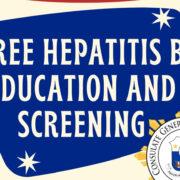THE start of new year has brought forth a new reason for kababayans to look forward to 2013 with a renewed sense of optimism in their seemingly elusive dream of being able to live with their family in America without fear of being prosecuted and deported.
On January 2, the Obama administration announced a new immigration rule that would shorten the time for undocumented immigrants to endure being separated from family members, who are already US citizens.
Beginning March 4, qualified undocumented immigrants who are immediate relatives of US citizens may already apply for the “extreme hardship” waiver. To be granted this waiver, they have to prove that their family in America would experience extreme hardship if they could not return to the United States from their country of origin.
This new Department of Homeland Security (DHS) ruling will benefit about a million of the estimated 11 million undocumented immigrants, who are spouses, children or parents of US citizens. This waiver will allow them to stay in the United States, while waiting for permanent residency status.
When their petition for “extreme hardship” is approved, they will still have to go back to their country of origin — but only for them to pick up their visa, and then come back to the United States.
Many, even among our own kababayans, took the risk of coming to the United States as tourists, and then stayed in the country even beyond the time period stipulated in their I-94. Some of these TnTs have pending petitions but could not wait for a long time away from their families.
Others enter the United States from the borders, without any legal documents that give them the privilege to be in the country even as visitors. Some are crew men or seamen who jumped ship.
They became out of status — living in America without any legal “papel.” Many were able to work “under the table,” without work authorization. Others came in as single, and then found love in the process.
Whatever the circumstance, these undocumented immigrants have been living in fear or isolation for a long time.
They opted for “kapit sa patalim,” — risking everything just to be with their family in the United States. This is especially true for fathers or mothers with young children. Each year away meant one year of missing out on raising their own kids.
This would also explain the decision of many undocumented children, who chose to take the risk of staying here in the United States just to take care of their old and ailing US citizen parents.
This would also be true for the lolos and lolas who have overstayed and have become TnTs, because they could not bear not helping take care of their apos while their children work hard for a living in this tough economic times.
Under the old rule, those who have overstayed in the US will have to wait for at least 10 years, because of the “ten-year ban” immigration policy, before they could be considered for the privilege of setting foot in the United States again.
This new ruling will cut the waiting time and help families of US citizens be reunited faster.
How is “extreme hardship” defined? Who qualifies for this waiver?
According to the website of the United States Citizenship and Immigration Service (USCIS), there are identifying broad factors that have been cited in existing precedent decisions as relevant to the evaluation of whether deportation would result in extreme hardship to the alien or to his or her qualified relative. These factors are:
1. the age of the alien, both at the time of entry to the United States and at the time of application for suspension of deportation;
2. the age, number, and immigration status of the alien’s children an d their ability to speak the native language and adjust to life in another country;
3. the health condition of the alien or the alien’s child, spouse, or parent and the availability of any required medical treatment in the country to which the alien would be returned;
4. the alien’s ability to obtain employment in the country to which the alien would be returned;
5. the length of residence in the United States;
6. the existence of other family members who will be legally residing in the United States;
7. the financial impact of the alien’s departure;
8. the impact of a disruption of educational opportunities;
9. the psychological impact of the alien’s deportation or removal;
10 .the current political and economic conditions in the country to which the alien would be returned;
11. family and other ties to the country to which the alien would be returned;
12. contributions to and ties to a community in the United States, including the degree of integration into society;
13. immigration history, including authorized residence in the United States; and
14. the availability of other means of adjusting to permanent resident status.
USCIS further noted that ultimately, “extreme hardship” must be evaluated on a case-by-case basis after a review of all the circumstances in the case, and none of the listed factors alone, or taken together, automatically establishes a claim of extreme hardship. Nor is the list exhaustive, as there may be other factors relevant to the issue of extreme hardship in a particular case.
And with respect to this new ruling, the government may come up with even more specific guidelines.
Already, kababayans and other immigrants who followed the rules and waited in line for a long time are questioning and opposing this new policy. They call this “backdoor amnesty” and contend that this is grossly unfair for law-abiding citizens and their families.
On the other hand, supporters of this policy explained that “it’s a way to streamline the extreme hardship process, in the best interest of families. The government accepted the extreme hardship cases of about 70 percent of applicants last year. But this would make the process actually work, turning an ordeal that lasts months or years into one that lasts days or weeks.”
If you think you or your loved ones qualify, it is best to seek the counsel of your trusted immigration attorney.
Happy New Year!
* * *
Gel Santos Relos is the anchor of TFC’s “Balitang America.” Views and opinions expressed by the author in this column are are solely those of the author and not of Asian Journal and ABS-CBN-TFC. For comments, go to www.TheFil-AmPerspective.com, https://www.facebook.com/Gel.Santos.Relos




